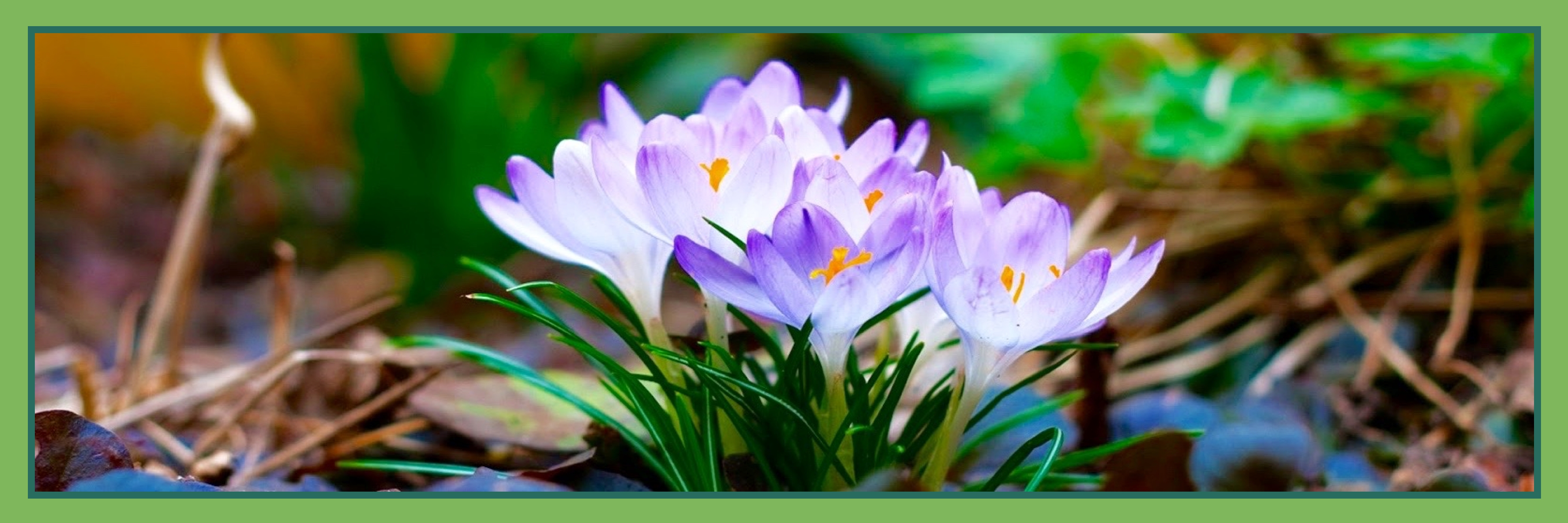THE WINTER SOLSTICE IN LATE DECEMBER
The holiday timing of the winter solstice is rooted in ancient religions. Throughout history, humans have observed this seasonal milestone and created spiritual and cultural traditions to celebrate the rebirth of sunlight after the darkest period of the year. In the Northern Hemisphere, the December Solstice is the Winter Solstice and the shortest day of the year, celebrated on December 21st or 22nd or 23rd. Although winter is the season of dormancy, darkness and cold, the December Solstice marks the " turning of the Sun " and the days thereafter, slowly get longer. The " WINTER SEASON " ends in the later part of March.
Events in The later part of the December Month

( Yule, a pagan Celebration on the winter Solstice )
The origin of the word Yule, has several suggested origins from the Old English word, geõla, the Old Norse word jõl, a pagan festival celebrated at the winter solstice, or the Anglo-Saxon word for the festival of the Winter Solstice, 'Iul' meaning 'wheel'. In old almanacs Yule was represented by the symbol of a wheel, conveying the idea of the year turning like a wheel, The Great Wheel of the Zodiac, The Wheel of Life. The spokes of the wheel, were the old festivals of the year, the solstices and equinoxes. The winter solstice, the rebirth of the Sun, is an important turning point, as it marks the shortest day, when the hours of daylight are at their least. It also the start of the increase in the hours of daylight, until the Summer Solstice, when darkness becomes ascendant once more.
2. https://wicca.com/celtic/akasha/yule.htm
The Dongzhi Festival in China ( On the Winter Solstice )
( Solstice in China ) Traditionally, the Dongzhi Festival is also a time for the family to get together. One activity that occurs during these get-togethers ( especially in the southern parts of China ) is the making and eating of tangyuan or balls of glutinous rice, which symbolize reunion. Tangyuan are made of glutinous rice flour and sometimes brightly colored. Each family member receives at least one large tangyuan in addition to several small ones. The flour balls may be plain or stuffed. They are cooked in a sweet soup or savory broth with both the ball and the soup/broth served in one bowl. It is also often served with a mildly alcoholic unfiltered rice wine containing whole grains of glutinous rice ( often with Sweet Osmanthus flowers ), called jiuniang.
1. http://www.chinesecookingrecipes.net/2011/12/chinese-dessert

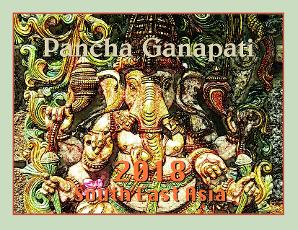
Pancha Ganapati ( Hindu 5-day celebration, DeC 21st-25th )
Pancha Ganapati is a modern five-day Hindu festival celebrated from December 21 through 25 in honor of Lord Ganesha, Patron of Arts and Guardian of Culture. The festival was created in 1985 as a Hindu alternative to December holidays like Christmas by Sivaya Subramuniyaswami (born Robert Hansen), a Western convert to Hinduism who founded the magazine Hinduism Today and the Saiva Siddhanta Church, headquartered in Hawaii; the festival is uncommon among traditional South Asian Hindus.
Hanukkah celebration ...Jewish event ... Date varies
Hanukkah begins at sundown on Christmas Eve ( December 24 ) this year — and ends on New Year's Day ( January 1 ) — because of the difference between the civil, solar Gregorian calendar and the lunar Jewish calendar. A solar year lasts 365 and a quarter days, while a lunar year lasts approximately 354 days, requiring a leap or " intercalary " month, according to Time. In 2016, the intercalary month was added to the Hebrew calendar and started in late February, causing Hanukkah to appear later on the Gregorian calendar. The Jewish calendar is presently on the year 5777, as Jews count years from Creation (3761/3760 BCE).
http://www.aish.com/h/c/
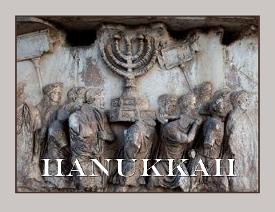
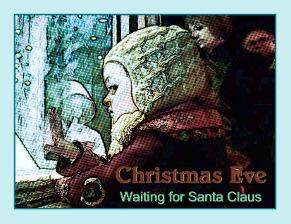
Christmas Eve ( December 24th )
In the evening, often just before bedtime, many families, particularly those with children, will hang up stockings on the fireplace or the end of their bed. These Christmas stockings are often red with a white fluffy trim, although they may be of any design and are often much bigger than the socks that they represent. Children hope that Santa Claus, a figure thought to represent an ancient European saint or Northern Euopean mythical Character, will enter their home via the chimney and fill their stockings with gifts and candy. In more recent times, families will gather around the Wide-Screen TV, being entertained by Xmas Holiday Specials. Some families have taken on a new tradition of opening Fed-Ex gifts that have been delivered from friends and Relatives.
CHRISTMAS DAY ( December 25th )
The first recorded date of Christmas being celebrated on December 25th was in 336AD, during the time of the Roman Emperor Constantine (he was the first Christian Roman Emperor). A few years later, Pope Julius I officially declared that the birth of Jesus would be celebrated on the 25th December. There are many different traditions and theories as to why Christmas is celebrated on December 25th. A very early Christian tradition said that the day when Mary was told that she would have a very special baby, Jesus (called the Annunciation) was on March 25th - and it's still celebrated today on the 25th March. Nine months after the 25th March is the 25th December!
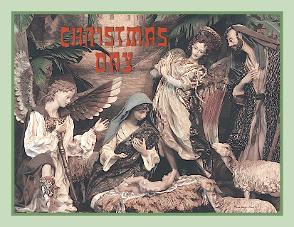
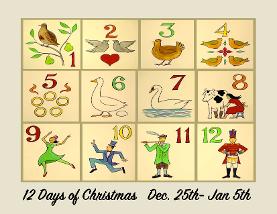
The 12 Days of Christmas ( December 25 - January 5th )
Celebrants observing the Twelve Days may give gifts on each of them, with each day of the Twelve Days representing a wish for a corresponding month of the new year. They feast and otherwise celebrate the entire time through Epiphany morning. Lighting a candle for each day has become a modern tradition in the U.S. and of course singing the appropriate verses of the famous song each day is also an important and fun part of the American celebrations. Some also light a Yule Log on the first night (Christmas) and let it burn some each of the twelve nights. Some Americans have their own traditional foods to serve each night. For some, Twelfth Night remains the biggest night for parties and gift-giving. Some households exchange gifts on the first (25 December) and last (5 January) days of the season. As in olden days, Twelfth Night to Epiphany morning is then the traditional time to take down the Christmas tree and decorations.
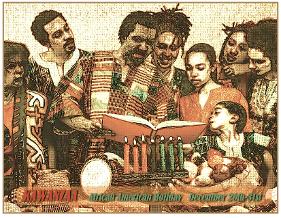
KWANZAA ( December 26th - December 31st )
The name Kwanzaa is derived from the phrase “matunda ya kwanza” which means “first fruits” in Swahili. Each family celebrates Kwanzaa in its own way, but celebrations often include songs and dances, African drums, storytelling, poetry reading, and a large traditional meal. On each of the seven nights, the family gathers and a child lights one of the candles on the Kinara (candleholder), then one of the seven principles is discussed. The principles, called the Nguzo Saba (seven principles in Swahili) are values of African culture which contribute to building and reinforcing community among African-Americans. Kwanzaa also has seven basic symbols which represent values and concepts reflective of African culture. An African feast, called a Karamu, is held on December 31.
1.http://www.epicurious.com/archive/holidays/kwanzaa/feast
Holy Innocents Day, ...Christian Churches ...December 28th
Feast of the Holy Innocents, also called Childermas, or Innocents' Day, festival celebrated in the Christian churches in the West on December 28 and in the Eastern churches on December 29 and commemorating the massacre of the children by King Herod in his attempt to kill the infant Jesus. " When Herod saw that he had been tricked by the wise men, he was infuriated, and he sent and killed all the children in and around Bethlehem who were two years old or under, according to the time that he had learned from the wise men. Then was fulfilled what had been spoken through the prophet Jeremiah:".
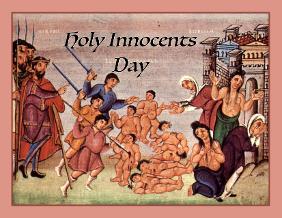
Major events during the month of January

New Years Day in Japan
New Year's Day, Shōgatsu. January 1. National Holiday. Established in 1948, but prior to then it was an important ceremonial day of imperial worship known as Shihō-hai. Today most Japanese businesses are closed from Dec. 29 through Jan. 3. At the beginning of the year, many Japanese visit a shrine to express gratitude for divine protection during the past year and to gain the blessings of the local kami for ongoing protection in the coming year. This first shrine visit of the new year is called Hatsumode . At Tsurugaoka Hachimangū Shrine in Kamakura alone, some two million people visit the shrine over three days during the New Year holiday. Japanese also make pilgrimages devoted to the Seven Lucky Gods during the month of January.
Feast of the Epiphany ( ITALY ) January 6th
The Feast of the Epiphany, celebrated January 6 with a national holiday in Italy, and the tradition of La Befana are a big part of Italian Christmas celebrations. Epiphany commemorates the 12th day of Christmas when the three Wise Men arrived at the manger bearing gifts for Baby Jesus. The traditional Christmas holiday season in Italy lasts through Epiphany. n popular folklore Befana visits all the children of Italy on the eve of the Feast of the Epiphany to fill their socks with candy and presents if they are good, or a lump of coal or dark candy if they are bad. In many poorer parts of Italy and in particular rural Sicily, a stick in a stocking was placed instead of coal. Being a good housekeeper, many say she will sweep the floor before she leaves. To some the sweeping meant the sweeping away of the problems of the year.
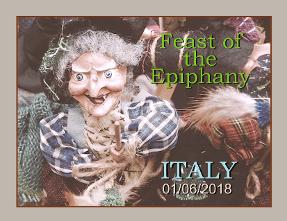
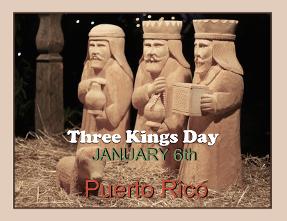
Three Kings Day in Puerto Rico January 6th
Puerto Rico has an extra-long holiday season. It starts at Thanksgiving and runs until mid-January. With about 90% of the population being Christian, the Christmas season is a big deal here. While you may think that Christmas is the big day, tradition dictates that it is the Epiphany or Three Kings’ Day or Día de los Tres Reyes Magos (which falls on January 6th each year) that is the biggest holiday in all the island.
Christmas Day ...Orthodox Christian ...January 7th
There are Orthodox Churches in the United States that recognize the holiday dates according to the Julian calendar, for example the Russian, Ukrainian, and Serbian Orthodox Churches. Christmas is still on December 25 in the Julian calendar so the January 7 date is only valid between 1901 and 2100. The Gregorian date for Orthodox Christmas will be January 8 in 2101 if the Julian calendar is still used. Many Orthodox Christians in countries such as the United States fast before Christmas Day. Many people identify the Nativity Fast as the period of preparing to celebrate Jesus Christ’s birth. It is believed that fasting helps people shift their focus from themselves to others, spending less time worrying about food and using more time in increased prayer and caring for the poor. In return, fasting before the Nativity enables one to fully enjoy, appreciate and celebrate the Nativity of Christ.
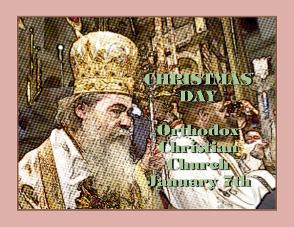

Nishinomiya Ebisu Festival ...Japan ...January 9th-11th
Nishinomiya Ebisu is known as the head shrine of the deity of good fortune, Ebisu. Supposedly the shrine was founded before the Heian Era. On New Year’s Day and Toka Ebisu ( January 10 ), 1.5 million visitors flock to the shrine to pray for the success of their businesses and the safety of their families. Fukuotoko-erabi is a ceremony held on January 10 and is very famous. People line up outside the main gate to the temple as early as four a.m. to race for the main building of the temple when it opens. The first three people to reach the priests are declared the fukuotoko of the year. On the 10th there is a ‘Good Luck Parade’ where a total of up to 600 celebrities, geisha and good luck girls (Fuku-Musume) give out lucky goods to the visitors. It seems like a very generous and fun festival.

MISSIONARY DAY ...Mizoram, INDIA ...January 11th
Missionary Day is a regional holiday in Mizoram, India that commemorates the arrival of two Welsh Christian missionaries in the state over a century ago. This holiday is always celebrated on January 11th and is declared as a public holiday by the state government. Government offices and educational institutions will be closed on this day. History of Missionary Day
Rev J H Lorrain and Rev F W Savidge arrived in the then Lushai country (Mizoram) by boat from Assam on January 11th 1894 to spread Christianity in the region. This resulted in conversion of almost all the Mizos to the new religion. The missionaries established the Presbyterian Church in northern part of Mizoram and the Baptist Church in the southern part of the state. To mark the day, local churches will hold prayers and organize community feast.
St. Sebastian Festival ...Puerto Rico ...Mid 4-days January
The San Se Festival has evolved over time, though it still is full of tradition and Puerto Rican cultural heritage. Mostly, it is a great big party, with people enjoying every aspect of it. It is attended by hundreds of thousands of people, who are very much part of the entertainment scene. Folks lucky enough to have a birds-eye view line the colorful balconies along Calle San Sebastián, and on the rest of the parade route, watching and shouting to the throngs of people in the streets below. Everyone else hits the streets. It’s basically the Puerto Rican version of New Orleans’ Mardi Gras, without the beads and breasts. The original "festival" (in the 1950′s) was organized by a priest at the San Jose Church, which is located on San Sebastián Street, to celebrate the feast day of San Sabastián. The annual feast-day festival lasted only a few years. In 1970, the festival was restarted and it has been held annually ever since.
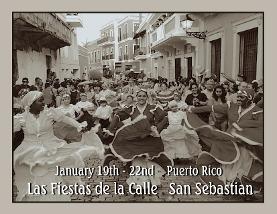

Festival of Lohri ....India Hindu ... January 13th
Festival of Lohri is celebrated on January 13th every year. However, the festival of Lohri's date is auspicious and is historically significant for Hindus. On January 13th every year, the sun begins its Uttarayan journey ( northward journey ) and takes entry in to Makar Rashi or Tropic of Capricorn. Lohri usually marks the coldest weather in northern India. The planet earth's tilt on it's axis is farthest away from the sun's rays at this time and has already begun its journey towards back. Hence the bonfire Festivals of Lohri marks the end of coldest month of Paush and beginning of Magh or the arrival of spring.
Makar Sankranti ...Hindu event ...January 14th-15th
Makar Sankranti, the harvest festival celebrated by Indians across the world, falls on January 14, this year. Also known as Makara Sankranti, the festival denotes the entry of the sun into the zodiac sign of Makara (Capricorn) as it travels on its celestial path. This change is the first and marks the end of the winters. It falls on the first day of the month of Magha, according to the Hindu calendar. As much as it is a seasonal observance celebrating the onset of spring, it is a harvest as well as a religious celebration.

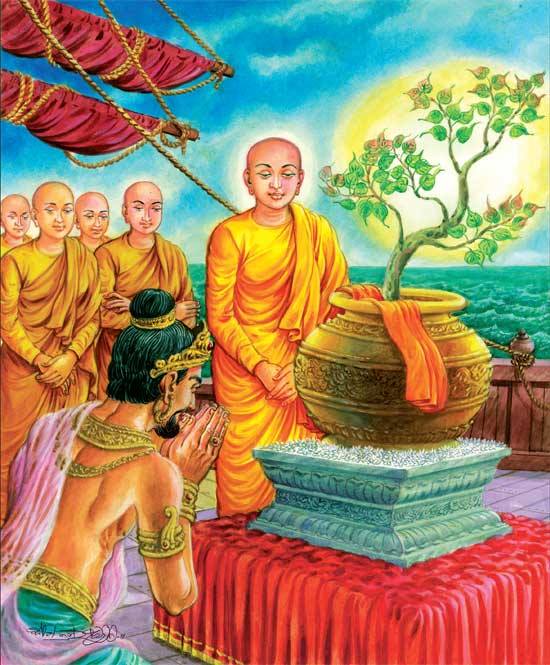
DURUTHU POYA ....Shrilanka INDIA Full Moon ...Mid-January
Duruthu poya ... Every full moon ( usually one a month ) is a public holiday in Sri Lanka. Each of the full moons has its own name and they are days to commemorate key events in Buddhism. These full moon days are known as Poya. The Poya dates will change each year and certain Poya dates may be a day before or after the date of the full moon. On Poya days, shops and businesses will usually close and the sale of alcohol and meat is forbidden.
Thorrablot ( Iceland ) January ( 20th-21st 2017 )
Thorrablot, was a sacrificial midwinter festival offered to the gods in pagan Iceland of the past. It was abolished during the Christianization of Iceland, but resurrected in the 19th century as a midwinter celebration that continues to be celebrated to this day. The timing for the festival coincides with the month of Thorri, according to the old Icelandic calendar, which begins on the first Friday after January 19th (the 13th week of winter).
http://www.icelandair.us/thorrablot/

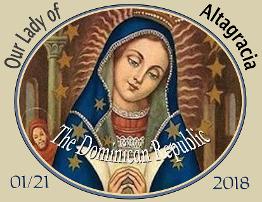
Our Lady of Altagracia ...Dominican Republic ...January 21st
Día de la Altagracia, or Altagracia Day, is a day commemorating "Our Lady of Altagracia", patronal image and protector of the people of the Dominican Republic. It is a feast day and annual public holiday on January 21. "Our Lady of Altagracia" is a portrait of the Virgin Mary painted in the 16th century.[1] The portrait is kept in The Basilica of Our Lady of Altagracia in the city of Salvaleón de Higüey. The festival was originally held on August 15, but was moved to January 21 to celebrate victory over the French in 1690. Patron saint of Dominican Republic. ... Wake up to a delightful taste of orange with a breakfast sweet roll
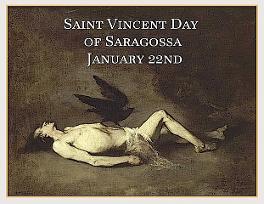
Saint Vincent Day ...Catholic Church ...January 22nd
Saint Vincent of Saragossa, also known as Vincent Martyr, Vincent of Huesca or Vincent the Deacon, the Protomartyr of Spain, was a deacon of the Church of Saragossa. He is the patron saint of Lisbon and Valencia. His feast day is January 22nd in the Roman Catholic Church and Anglican Communion and 11 November in the Eastern Orthodox Churches. He was born at Huesca and martyred under the Emperor Diocletian around the year 304. Vincent is also the patron of vintners and vinegar-makers. The island of St. Vincent in the Caribbean, now a part of Saint Vincent and the Grenadines, was named by Christopher Columbus after Vincent of Saragossa, as the island was discovered by Europeans on 22 January, St. Vincent's feast day.
SAINT TATIANA DAY ...Ukraine & Russia ...January 25th
Tatiana Day is a religious holiday, observed on January 25, according to the Gregorian calendar, in both Russia and Ukraine. It is named after Saint Tatiana, a Christian martyr of third century Rome during the reign of Emperor Alexander Severus. Saint Tatiana was also known as "the patron saint of students," earning the holiday its other name, Students' Day.
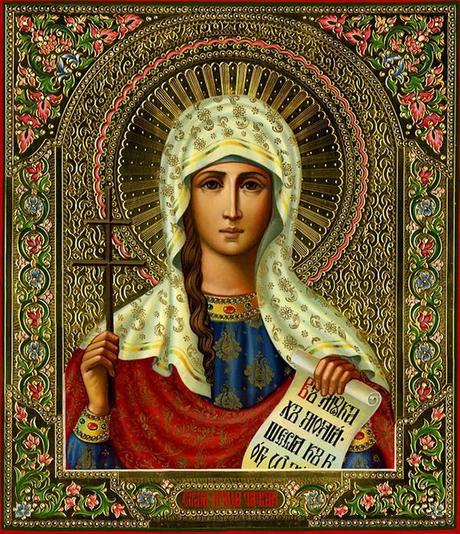
Saint Sava Day ...Serbia ...January 27th
Saint Sava ( 1174 – 14 January 1236 ), known as " The Enlightener ", was a Serbian prince and Orthodox monk, the first Archbishop of the autocephalous Serbian Church, the founder of Serbian law, and a diplomat. Sava, born Rastko, was the youngest son of Serbian Grand Prince Stefan Nemanja (founder of the Nemanjić dynasty), and ruled the appanage of Hum briefly in 1190–92. He then left for Mount Athos where he became a monk, with the name Sava (Sabbas). At Athos, he established the monastery of Hilandar, which became one of the most important cultural and religious centres of the Serbian people. In 1219 he was recognized as the first Serbian Archbishop by the Patriarchate, and in the same year he authored the oldest known constitution of Serbia, Zakonopravilo, thus securing full independence; both religious and political. Sava is regarded the founder of Serbian medieval literature.
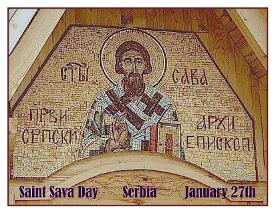
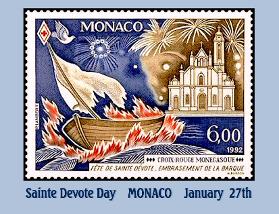
Sainte Devote Day ... Monaco ... January 27th
According to an old legend, Devota ( Dévote ), a young Christian girl from the ( Mediterranean Island ) of Corsica, was martyred by the Roman Prefect Barbarus under the Emperors Diocletian and Maximian, at a date that we can place between 303 AD and 304 AD. Her body was stolen by Christians the following night and was placed in a boat, transported to Monaco ( Southern Coastal area near France )and buried in a chapel in the “Gaumates” valley near the harbor on 27th January of the same year. Since 1874; the tradition in Monaco has been continued every year. A boat on a woodpyre is burnt in the presence of the Sovereign and the Sovereign Family, accompanied by prominent figures from Monaco. Once the boat has been burnt, a fireworks display takes place in Port Hercule.
Holy Day of the Three Hierarchs Orthodox Christianity January 30th
The Three Hierarchs of Eastern Christianity refers to Basil the Great (also known as Basil of Caesarea), Gregory the Theologian (also known as Gregory of Nazianzus) and John Chrysostom. They were highly influential bishops of the early church who played pivotal roles in shaping Christian theology. In Eastern Christianity they are also known as the Three Great Hierarchs and Ecumenical Teachers, while in Roman Catholicism the three are honored as Doctors of the Church. The three are venerated as saints in Eastern Orthodoxy, Catholicism, Anglicanism and other Christian churches.
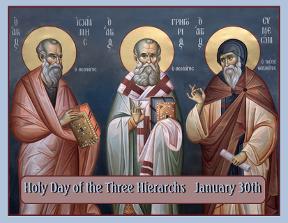
Major events during The Month of February
IMBOLIC ...Pagan festival of Spring ...February 1st
Imbolc is mentioned in some of the earliest Irish literature and there is evidence it has been an important date since ancient times. It is believed that it was originally a pagan festival associated with the goddess Brigid and that it was Christianized as a festival of Saint Brigid, who is thought to be a Christianization of the goddess. At Imbolc, Brigid's crosses were made and a doll-like figure of Brigid, called a Brídeóg, would be paraded from house-to-house. Brigid was said to visit one's home at Imbolc. To receive her blessings, people would make a bed for Brigid and leave her food and drink, while items of clothing would be left outside for her to bless. Brigid was also invoked to protect homes and livestock. Special feasts were had, holy wells were visited and it was also a time for divination.
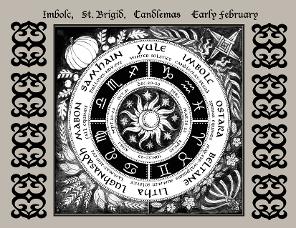
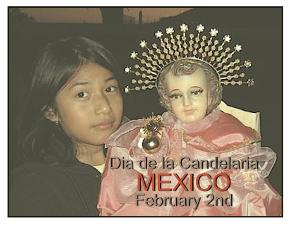
Festivals of Candles ...MEXICO ...February 2nd
Día de la Candelaria, like many other Mexican celebrations, represents a fusion of pre-Hispanic traditions and Catholic beliefs. Celebrated on February 2nd, it falls forty days after Christmas, and is celebrated by Catholics as the "Feast of Purification" or as the "Presentation of Christ in the Temple." According to Jewish law, it was customary to bring a baby to the temple after that period of time had passed. So Jesus would have been taken to the temple on February second. We should also note here that Mexican children receive the second round of Christmas presents on Jan. 6, Kings Day. Día de la Candelaria is a follow-up to the festivities of King's Day and Tamales are the food of choice.
Festival for Inanna ...Ancient Sumeria ...February 2nd
Festival for " INANNA ", Is a vastly different personality from that of the traditional Mother Goddess ( as exemplified in Ninhursag ), Inanna is a brash, independant young woman; impulsive and yet calculating, kind and at the same time careless with others feelings or property or even their lives. Jeremy Black writes: The fact that in no tradition does Inanna have a permanent male spouse is closely linked to her role as the goddess of sexual love. Even Dumuzi, who is often described as her `lover', has a very ambiguous relationship with her and she is ultimately responsible for his death. The goddess Inanna represents the many facets of being a woman and the myriad of roles they play. She is a powerful example of a courageous mode of being that is unafraid to face the changes that are required during the course of a woman’s life. As one who courageously traveled into the dark places of the soul, she can be our guide in times of tribulation.
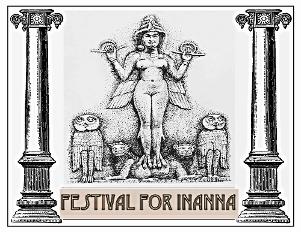
The Feast of Saint Agatha ( Sicily ) February 3rd -5th
Saint Agatha is the third most important religious celebration in the world, after the Semana Santa in Sevilla and the Corpus Domini in Cuzco, Peru, because of the sheer size of the celebrations and the amount of people who participate in it. The Sicilian Saint is celebrated in Catania, a beautiful city with plenty of Sicilian Baroque art and monuments, from February 3rd to the 5th. On Februray 3rd the procession takes place on the streets of Catania. Here Sicilian Baroque constructions made of wood are brought onto the streets to symbolize the unions of arts and artisans of the town: they are called cerei or candelore. This tradition dates back to the 5th or 6th century.The most important day is the 4th, though, because that’s when the Saint’s relics are brought onto the street, with over one million people waiting to catch a glimpse of their Patron Saint.
1.http://www.italyreligious-festival-feast-st-agatha
http://ragusaonline.com/santagata/_index.htm
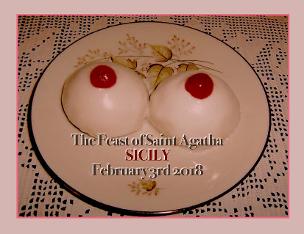
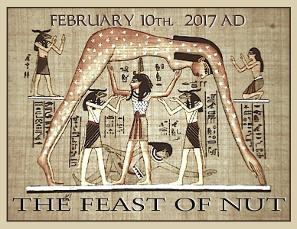
The Feast of NUT, Egypt mother of the sun
full-Moon Date Jan-Feb ( Feb 10th 2017 )
There were many festivals to Nut throughout the cosmic year, including the 'Festival of Nut and Ra' and the " Feast of Nut ". Some of Nut's titles included the " Protector of the Sky ", 'She Who covers and protects', and 'She Who Holds a 1,000 Souls'. She was also a immortal being and protector of the dead, a cosmic deity, and the sky personified. However, no large temples or cult centers were built for her. She only had a few sanctuaries with attending priests. Pictographs occasionally depicted her with food offerings. Her power over the Egyptians were formulated in their belief that without the fabric of Nut, chaos would once again swallow the world into nothingness. https://discoveringegypt.com/ancient-egyptian-gods-and-goddesses/
Basant Holy Day in India Late January/Early February
In 2017 this holy day starts on February 1st. Basant or Vasant is one of the six ritus ( seasons ) corresponding to spring. In Punjab India Basant is celebrated as most auspicious festival than any other. People from all over India gathered here to feel the purity of this spring season. Basant Panchami has its own joy and pleasure. Every year Kite Festivals are celebrated in many states of India. This is cultural festival and commonly celebrated in India and Pakistan on same day. On that day women generally dressed in yellow garments and men wearing yellow colored turbans join the festival. The color yellow holds a special meaning for this celebration as it signifies the brilliance of nature and the vibrancy of life in Spring time. The whole place bursts with yellow during this festival A large fair is organized on the day of Basant Panchmi in the Shiv temple of Bansari and Gudri which is located in Dhuri, Sangrur district. The fair includes swings, rides and food.
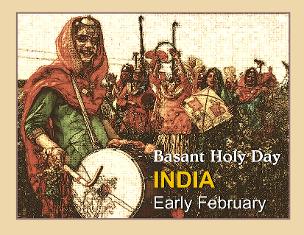
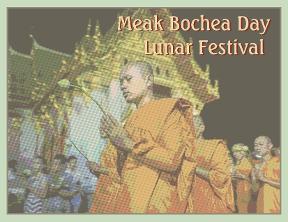
Meak Bochea Day ( Full-Moon February OR March )
A Day ( February 11th, 2017 ) to Repent your Sins in Cambodia, Laos and Thailand. Meak Bochea is an important religious festival observed by Buddhists in Cambodia, Laos and Thailand. It is celebrated on the full moon day of the third lunar month, which usually falls in late February or early March. Meak Bochea commemorates the ordainment of Buddha’s first 1250 disciples who spontaneously came to see him and to listen to his sermon that day 2500 years ago. It is also said that on this day more than 2550 years ago, Buddha announced his passing away, which would happen three months later. He correctly predicted his death and it is now remembered as Visakha Bochea Day (which also happens to be his birthday and enlightenment day).
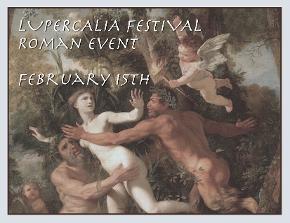
Lupercalia festival of ROME, Italy February 13-15th
Lupercalia was a very ancient, possibly pre-Roman pastoral festival, observed on February 13 through 15, to avert evil spirits and purify the city, releasing health and fertility. Lupercalia subsumed Februa, an earlier-origin spring cleansing ritual held on the same date, which gives the month of February (Februarius) its name. The Lupercalia may be the longest-lasting of the Roman pagan festivals. Some modern Christian festivals, like Christmas and Easter, may have taken over elements of earlier pagan religions, but they are not essentially Roman, pagan holidays. Lupercalia may have started at the time of the founding of Rome (traditionally 753 B.C.) or even before. It ended about 1200 years later, at the end of the 5th century A.D., at least in the West, although it continued in the East for another few centuries.
Saint Valentines Day ( February 14th OR 15th ? )
The Christian church may have decided to place St. Valentine’s feast day in the middle of February in an effort to “Christianize” the pagan celebration of Lupercalia. Celebrated at the ides of February, or February 15, Lupercalia was a fertility festival dedicated to Faunus, the Roman god of agriculture, as well as to the Roman founders Romulus and Remus.In Great Britain, Valentine’s Day began to be popularly celebrated around the 17th century. By the middle of the 18th, it was common for friends and lovers of all social classes to exchange small tokens of affection or handwritten notes, and by 1900 printed cards began to replace written letters due to improvements in printing technology.
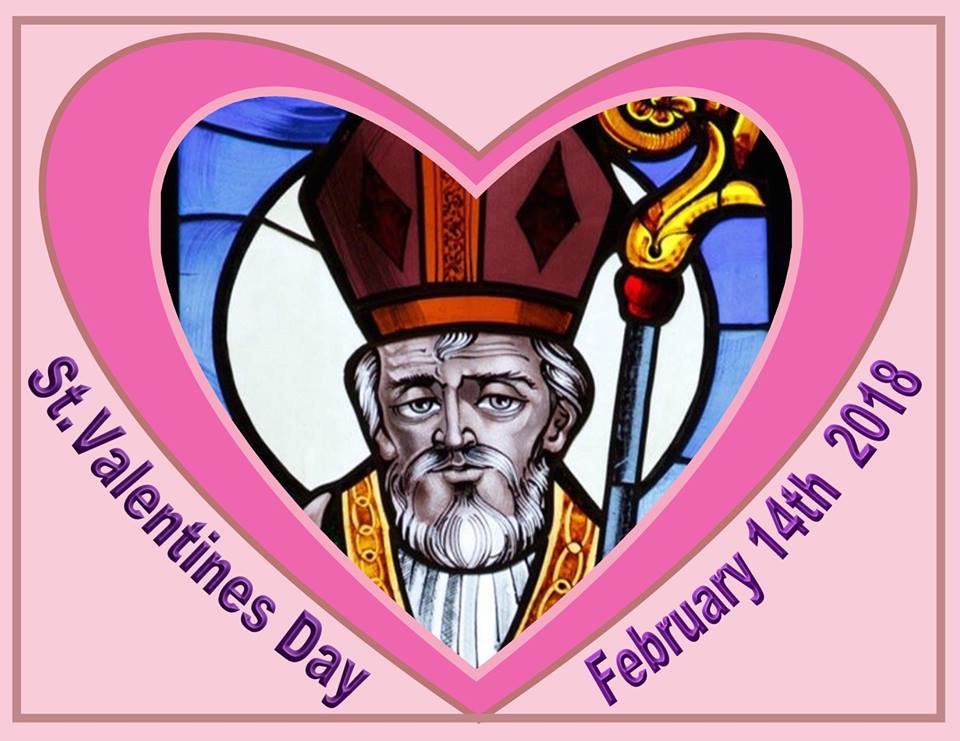

Maha Shivratri ( Hindu celebration ) Late February-March
Maha Shivratri, ( February 25th, 2017 )which literally translates to "great night of Shiva" is a Hindu festival largely celebrated in India as well as in Nepal. The festival is celebrated on the new moon day in the month of Maagha according to the Hindu calendar. The day is celebrated to venerate Lord Shiva, an important deity in Hindu culture. Maha Shivratri is a Hindu festival which is celebrated by people following Hinduism in India. People often fast on the night of Shivratri and sing hymns and praises in the name of Lord Shiva. Hindu temples across the country are decorated with lights and colorful decorations and people can be seen offering night long prayers to Shiva Lingam. Woodapple leaves, cold water and milk are offered to the Shiva Lingam on this day as they are believed to be Lord Shiva's favorite.
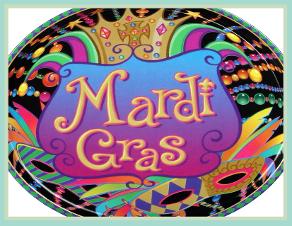
Mardi-Gras ( On the Christian Lent period, Mid-February to March )
February 28th, 2017 ...Across the globe, pre-Lenten festivals continue to take place in many countries with significant Roman Catholic populations. Brazil’s week-long Carnival festivities feature a vibrant amalgam of European, African and native traditions. In Canada, Quebec City hosts the giant Quebec Winter Carnival. In Italy, tourists flock to Venice’s Carnavale, which dates back to the 13th century.
Go TO the ( February ) Month Page for more details
1.The New Orleans Mardi-Gras schedule for the next 20 years !
MAJOR EVENTS AND FESTIVALS until mid- MARCH
Ash Wednesday Christian Holy Day 40 days before Easter
Some Christians in the United States attend special Ash Wednesday church services. This includes students who attend Catholic and other church schools. Priests usually place blessed ashes in form of the cross on individuals’ foreheads to remind them of mortality, sorrow for sins, change, and forgiveness. Ash Wednesday is very early this year( February 14th 2018 ) marks the beginning of Lenten discipline for observant Christians. It is traditionally a time of fasting and prayer in preparation for receiving or reaffirming baptism at Easter. The custom of sprinkling ashes as a sign of mourning and repentance, celebrated on Ash Wednesday, is known in many cultures and traditions, including in ancient Egypt, Arabs and Greece. In the liturgy, it appeared in the eighth century — the first testimony of the practice comes from the tenth century. In 1091, Pope Urban II launched the custom as binding the whole Church. At the same time, it has been established that the ash has to come from the palm trees dedicated on Palm Sunday of the previous year.


Festival of goddess Attukal India February OR March
Attukal Pongala, considered the largest congregation of women in the world, will be held here on ( March 11th, 2017 ) . Lakhs of women devotees will line the 10 km radius around the temple to prepare sweetened rice on an earthen pot, a speciality of the event. According to officials with Attukal Bhagavathy Temple Trust, around 40 lakh women devotees are expected to participate in the festival. Last year, around 35 lakhs women had attended the pongala. The ‘Kappukettu’ ritual which sets off the temple festival will begin here on February 15 with the recitation of the legend of Kannaki at 10.30 am. Film actor Kaviyoor Ponnamma will inaugurate the cultural festival at 6.30 pm. Play back singer P. Jayachandran will be felicitated at the event.
WHAT IS THE " IDES " OF MARCH ??? ...MARCH 15th
In March, May, July, and October, the Ides fell on the 15th day. In every other month, the Ides fell on the 13th day. The word Ides derives from a Latin word, meaning to divide. ... Bottom line: The Ides of March corresponded to March 15 in ancient Rome. We remember them thanks to William Shakespeare's play Julius Caesar.
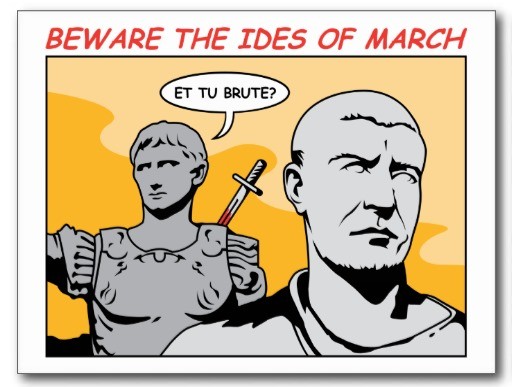
goddess of fertility day ...Earth Event ...March 18th
In the ancient times, a few days before the spring equinox, women wishing to conceive would make offerings to the Greek goddess, Aphrodite, and to other gods and goddesses of fertility in celebration of life, fertility, and rebirth. Often referred to as Ostara ( after the Norse goddess of fertility ), the day was often marked with a " plentiful feast, cleaning, decorating, and exploration.” Also, perhaps most of the pagan religions in the Mediterranean Sea area had a major seasonal day for religious celebration at or following the Spring Equinox. Cybele, the Phrygian fertility goddess, had a consort, Attis, who was believed to have been born via a virgin birth. Attis was believed to have died and been resurrected each year during the period MAR-22 to MAR-25. Celebrating the Goddess of Fertility Day is not only for those wishing to start or grow a family; it is also for those that want to seed a new project or grow an existing one.
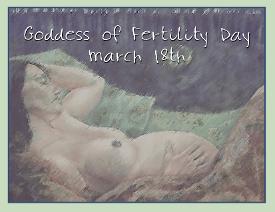
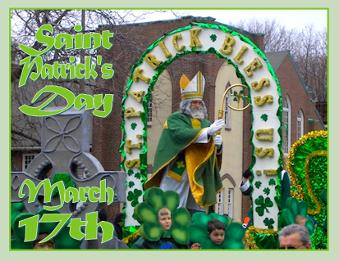
Saint Patrick's DAy March 17th
St Patrick’s Day is celebrated in many parts of the world, especially by Irish communities and organizations. Many people wear an item of green clothing on the day. Parties featuring Irish food and drinks that are dyed in green food color are part of this celebration. It is a time when children can indulge in sweets and adults can enjoy a “pint” of beer at a local pub. Saint Patrick in Armagh with a spectacular display of color, music, dance and entertainment for all to enjoy. The celebrations begin with a high energy carnival procession departing the Palace Demesne at 1pm and making its way through Armagh City Center.
1. http://www.ireland.com/en-us/events/festivals/articles/st-patricks-day/
2. http://www.ireland.com/en-us/destinations/
Saint Joseph's Day Catholic/Christian March 19th
On the March 19 feast of St. Joseph, Catholics honor him with an age-old tradition called St. Joseph’s table. History has it the tradition began on the Italian island of Sicily. There was a drought that ruined harvest and caused a famine. The Sicilians prayed to Saint Joseph, the Patron Saint of the Family and prayers were answered when the famine and the drought receded. In the finest Italian heritage, homage to St. Joseph comes in the form of food and celebration. Over the years many different types of foods have joined the traditional collage that today is known as St. Joseph’s table – all done in the theme of bounty food for all. March 19 always falls during Lent, and traditionally it is a day of abstinence. This explains the custom of St. Joseph tables being covered with meatless dishes.
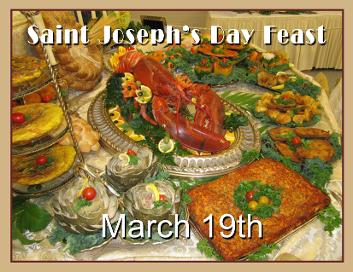

Santeria Festival for Agayu ( African god ) March 19th
Agayu owns the volcano, the roots of the Earth. Known as the father of Chango, he shares many of Chango’s characteristics, including fire and the double-headed hatchet. Agayu is pictured as carrying the Earth or Elegua on his shoulders. His colors are deep brown and milky white, with accents in orange. Agayu’s necklace can also include accent beads in red, yellow, light and dark blue, green, and coral—there should be nine colors in all. Aggayu is responsible for creating new land through the forces of vulcanism, plate tectonics and through sediment being washed down rivers and deposited in new areas. Patakis ( legends ) talk about his hard work striding across the lands, building new mountains, carving the pathways of new rivers and his various relationships with several of the female orishas. In particular, Aggayu has a deep infatuation and love for Oshun.
International Astrology Day March 19th or 20th or 21st
International Astrology Day (most often observed on either March 20 or March 21) is an annual observance/holiday celebrated by astrologers and astrology enthusiasts. It is seen by astrologers as the beginning (first day) of the astrological year. It is the first full day of the astrological sign of Aries and thus marks the beginning of the tropical Zodiac. International Astrology Day is celebrated/observed depending on the exact day that the Northward equinox actually occurs. This varies year to year between March 19–22, though it usually falls on March 20 or March 21. The date of the holiday occurs at the same time of the Iranian new year (Norouz), which is celebrated in many places throughout the Middle East and Central Asia. It also corresponds with the beginning of the Bahá'í calendar, which is celebrated as Bahá'í Naw-Rúz. Other holidays occurring around this time include Ostara (amongst neopagans), Chunfen in China, and Vernal Equinox Day (a public holiday in Japan), among others.
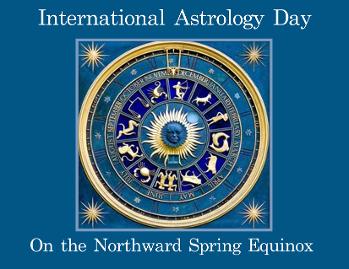
END OF WINTER AND THEEVE of the Spring Equinox March 20th, 2017
